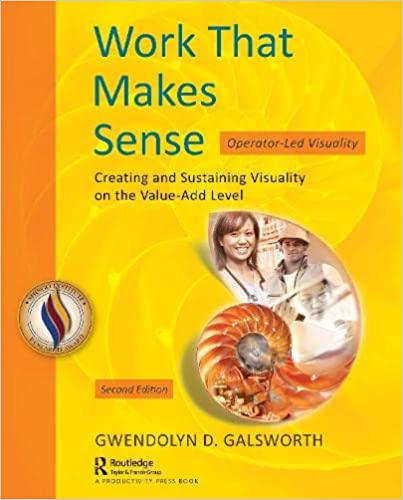
English | 2022 | ISBN: 1032054859 | 291 pages | True PDF | 111.94 MB
This book presents the mechanics of implementing visuality on the value-add level known as Work That Makes Sense (WTMS). The step-by-step WTMS process described in this book teaches operators a proven method for translating information deficits into visual solutions that take the struggle out of their day-to-day work. As a result, operators transform their work area into a work environment that speaks--a work environment that, by design, shares vital information in the form of visual devices that help them perform their day-to-day work with precision and completeness.
At the heart of this visual conversion approach is an element unique to Galsworth's paradigm called I-driven that recognizes that operators will pursue self-leadership in the company's improvement initiatives if they are given the opportunity to learn how to do so. Also recognized is the fact that this can only happen if associates are taught--and given the opportunity to learn and apply a new system of thinking. The author calls this new system visual thinking.
This book provides that learning pathway, in detail, supported by hundreds of actual visual solutions, developed by operators who have followed that pathway and become visual thinkers for themselves--I-driven. They become self-leaders, in control of their corner of the world and able and willing to share their strengths with others. In this way, the WTMS process produces a deep and abiding change in the company's work culture that builds creativity and ownership. As a result, the organization's leadership framework widens to include operators.
When effectively applied the WTMS process detailed in this book produces 15% to 30% improvement in local KPIs, including productivity, on-time delivery, quality, and costs; these figures are documented and presented in the pages of this book.
Written for operators, this book includes a wealth of color photographs, the majority of which are visual solutions created by visual thinkers who have lived this process for themselves. All are fully captioned and thoughtfully described. The book also includes twelve tasks that managers implement in support that they seek on the operator level. WTMS teaches that visual devices translate information into exact behavior, embedding and sustaining precision through visual solutions. Precision is built in by the same operators who execute it. This is the heart of an I-driven visual enterprise. Once learned and operationalized, this paradigm allows the organization to take on any new improvement effort. Organizational alignment and teamwork have been redefined and operationalized.



